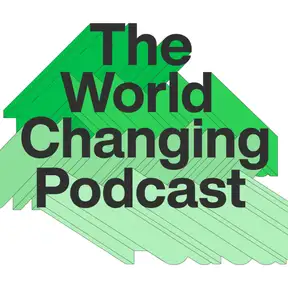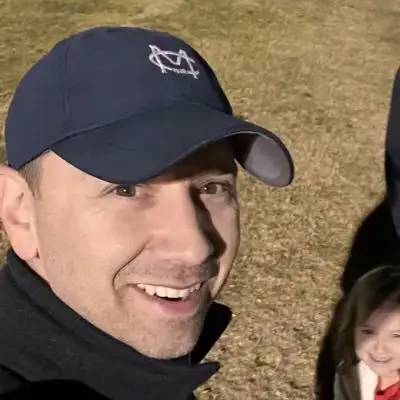Modernizing & Decarbonizing the US Power Grid with Gary Rackliffe (Hitachi Energy, ABB, Westinghouse Electric)
Download MP3The dream of the smart, sustainable grid. What will it take to achieve the energy grid of our dreams? We are so excited to share this conversation we had with Gary Rackliffe. Gary is a special person to talk to for several reasons. First, Gary has spent his entire 30+ year career building and designing the US power grid. Second, he is a leader in the planning and technology needed to modernize and decarbonize the grid for the future. Our biggest take away from our conversation with him is we may already have a lot of the infrastructure and technology needed to meet our future energy needs. If we add more transmission lines along side time-sensitive consumption, we could achieve a lot of our goals. What is your take away from this conversation?
Let us know!
Gary's Full Bio:
Gary Rackliffe is the Vice President for Market Development and Innovation at Hitachi Energy located in Raleigh, North Carolina. He is an industry leader for the energy transition, grid modernization, and digital transformation of the electric power grid. He has extensive experience leading Flexible AC Transmission Systems (FACTS); Utility Operations Software business development, sales, and product development; Strategy and Marketing Communications for Power Grids products and systems; Regional Sales for T&D equipment; and Innovation and Strategic Initiatives for smart grid and grid modernization, the digital transformation, and the energy transition.
Let us know!
Gary's Full Bio:
Gary Rackliffe is the Vice President for Market Development and Innovation at Hitachi Energy located in Raleigh, North Carolina. He is an industry leader for the energy transition, grid modernization, and digital transformation of the electric power grid. He has extensive experience leading Flexible AC Transmission Systems (FACTS); Utility Operations Software business development, sales, and product development; Strategy and Marketing Communications for Power Grids products and systems; Regional Sales for T&D equipment; and Innovation and Strategic Initiatives for smart grid and grid modernization, the digital transformation, and the energy transition.
Gary is a member of the Department of Commerce Renewable Energy and Energy Efficiency Advisory Committee (REEEAC), the DistribuTECH Advisory Committee, the GridWise Alliance Technical Council (past board member), the E4 Carolinas Innovation Council, and the IEC Smart Energy Systems Committee (SyC SE), serving as the SyC SE Technical Advisor for the IEC US National Committee. He also chairs NEMA’s Utility Products & Systems Division Leadership Committee and serves on the Board of Directors for the Research Triangle Cleantech Cluster, the Smart Electric Power Alliance (SEPA), Texas A&M Smart Grid Center, and E4 Carolinas.
Gary holds BS and ME degrees in Electric Power Engineering from Rensselaer Polytechnic Institute in Troy, NY and a MBA degree from the Tepper School of Business at Carnegie Mellon University in Pittsburgh, PA. He is a Registered Professional Engineer and an IEEE Senior Member. He has co-authored a T&D planning book and has written numerous technical papers and articles.
Terms and notes for the show:
NYTimes article referenced in the introduction: https://www.nytimes.com/interactive/2023/06/12/climate/us-electric-grid-energy-transition.html
Transmission and Distribution:
A transmission line carries electric energy from one point to another in an electrical power system. They can carry alternating current or direct current, or a combination of both.
Transmission lines are important for moving energy around.
HVDC:
A high-voltage direct current electric power transmission system, offers long distance power transmission, Improved integrity of renewable energy and the ability to connect different power grids.
Solar PV:
PV stands for photovoltaic and it gets its name from the process of converting light photons to electricity, which is also called the photovoltaic effect. This is another way (fancier) to describe solar power.
PV stands for photovoltaic and it gets its name from the process of converting light photons to electricity, which is also called the photovoltaic effect. This is another way (fancier) to describe solar power.
Load versus Generation:
Load is another word for the demand for electricity on a grid.
Load is another word for the demand for electricity on a grid.
It's the total electricity being consumed or removed from the grid by the users of the grid.
Dispatchable power versus a Non-dispatchable power:
These two terms refer to the ability of a power source to be controlled and adjusted, to meet fluctuating demand for electricity.
These two terms refer to the ability of a power source to be controlled and adjusted, to meet fluctuating demand for electricity.
Dispatchable power sources (currently) include fossil fuels, hydrogen, Geothermal and biomass power.
Non dispatchable power also known as intermittent or variable resources are those that cannot be easily controlled or scheduled to match the electricity demand. Examples include solar power, wind power, wave and tidal power.
These fall into the non dispatchable category because their availability is influenced by weather conditions and natural phenomenon.
One gigawatt:
One gigawatt is enough to power about 750,000 homes. So, three quarters of a million homes can be powered by one gigawatt.
One gigawatt is enough to power about 750,000 homes. So, three quarters of a million homes can be powered by one gigawatt.
100% uptime:
100% uptime it's a reliability term. It is referring to perfect or near perfect reliability with no power outages.
100% uptime it's a reliability term. It is referring to perfect or near perfect reliability with no power outages.



